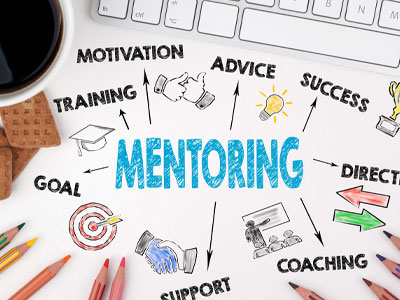Here’s a quick look at them and how you can engage them in a way that they respond to best:
1. Interpersonal Learner: The “People” Learner
For this person, encourage discussions, presentations and mentoring. They like to work with others and can both guide and manipulate situations to meet their needs. They love personal feedback and are very conscious of verbal and nonverbal language.
2. Intrapersonal Learner: The “Thinker” Learner
Provide opportunities for self-reflection, research and visioning. They are internally motivated and like to know how their roles connect with others. The thinker enjoys correspondence via email. Make sure you give these people some space to work.
3. Kinesthetic Learner: The “Doer” Learner
Get ready to go — these folks like short explanations and getting involved with props and tangibles to figure out the job. They like on-the-job training, role playing and practicing the task. They like to build models and connect their actions to everyday life.
4. Mathematical Learner: The “Numbers” Learner
Logical by nature, the numbers learner likes to see things in facts and figures, step by step, logically presented, and with short explanations. This person will ask a lot of “why” questions and enjoy searching for the answers through experimentation.
“Once we know the learning styles of our teams we can better choose events, debriefs, meeting structures, communication protocols, onboarding, training design, ad hoc team assignments and more.”
5. Verbal Linguistic Learner: The “Word” Learner
This learner loves to have things explained — both by you and by them for clarification. They love to present materials, put together policy handbooks, tell stories and use humor/irony.
6. Visual Learner: The “See It” Learner
Explore maps, charts, movies and visioning to illustrate learning points. Encourage them to spearhead the design of displays/marketing, timelines, concept maps and documentation/handout creation.
7. Musical Learner: The “Logic” Learner
Probably the one you’ll meet the least often in a group. They like to demonstrate things in patterns, catchy lingo, rhymes and mnemonics. They like to see the logical sequence and flow of things.
8. Naturalistic Learner: The “Nature” Learner
Work toward using analogies of nature to explore concepts. These folks relate to cycles, interconnectedness, patterns, cause and effect. Connect everything to real life and encourage them to classify things into their proper place.
Once we know the learning styles of our teams we can better choose events, debriefs, meeting structures, communication protocols, onboarding, training design, ad hoc team assignments and more. Each intelligence brings different tools in their toolbox that they like to use. For example, kinesthetic learners will want to be hands-on with the project at hand, interpersonal learners will want to work with others, collaborate and celebrate together, while intrapersonal learners will want to work independently and appreciate feedback and quiet accolades.
By knowing your team at your law firm, you can choose activities and events that engage them. Think of each event or activity as a mini class and you are the teacher. How would you best lead that lesson so that it was “learner-centric,” not “teacher-centric”? Building that engagement in the team activity is all about ensuring that the learner feels that they can achieve in a structure that is built for their success.
When you combine all these different learning styles, that's called Multiple Intelligence Quotient. Applying the science works because good team building is good team learning.





